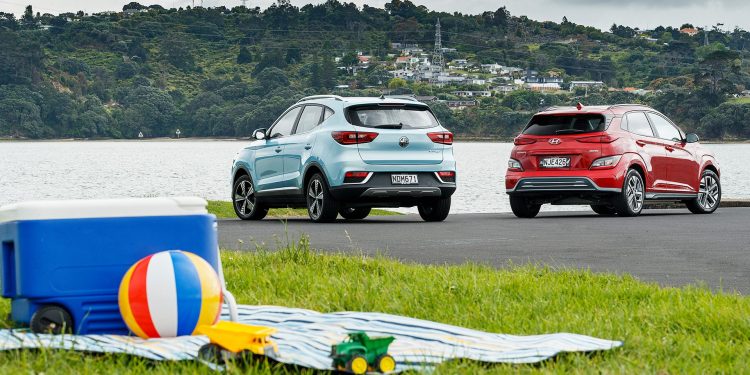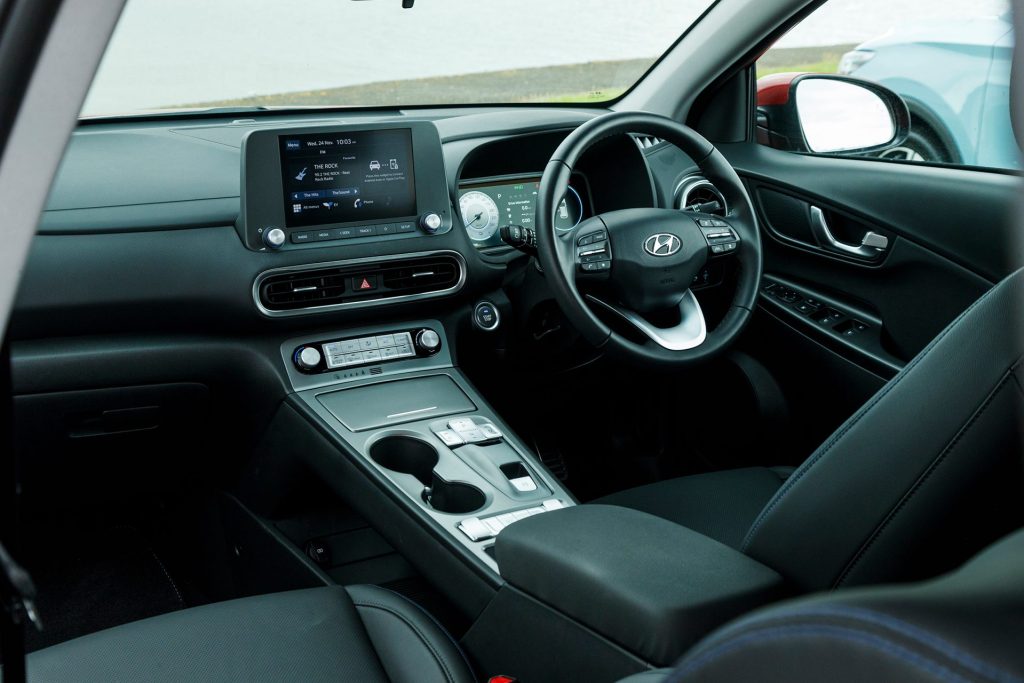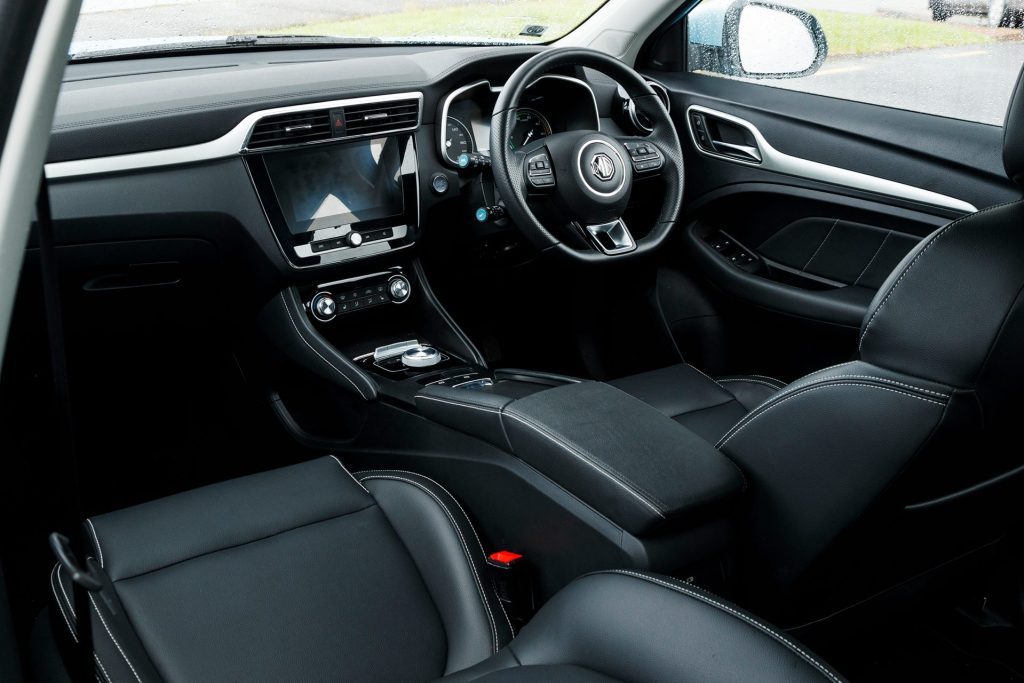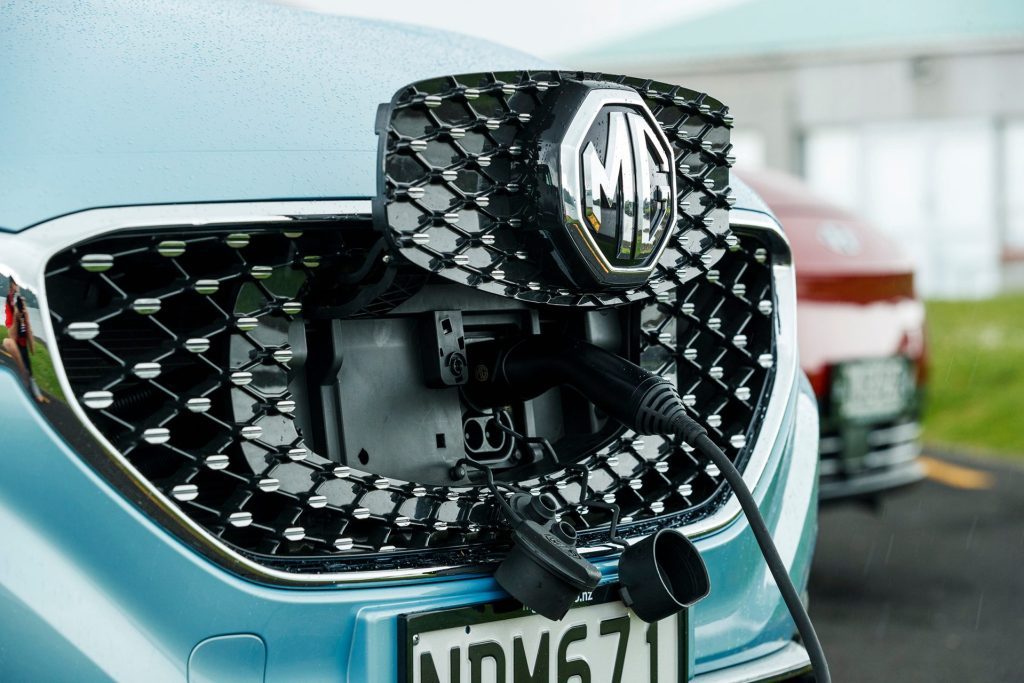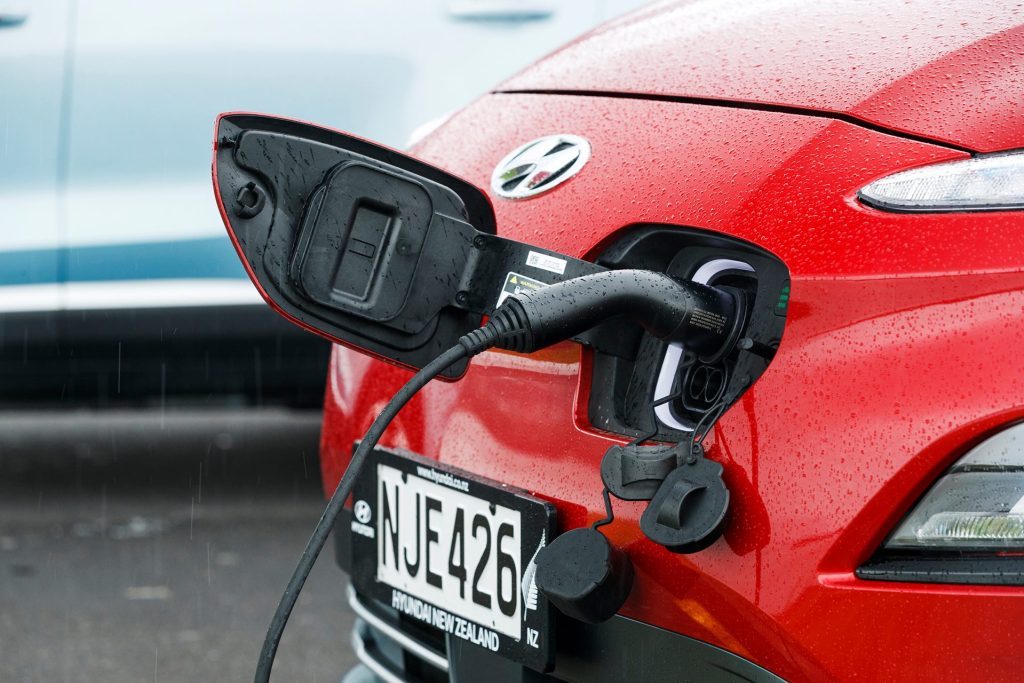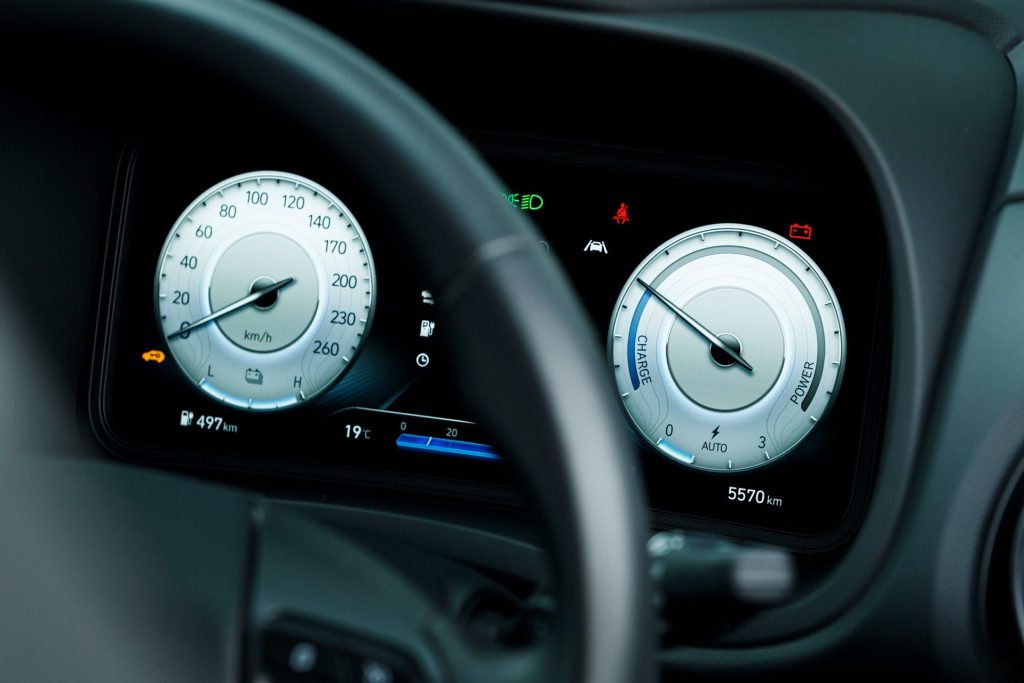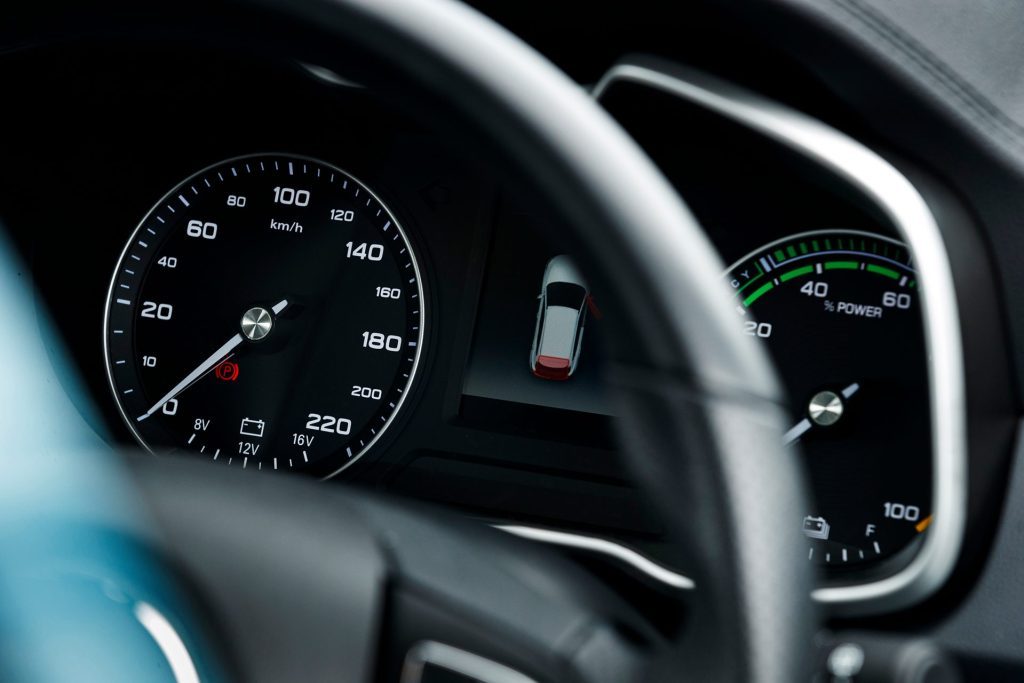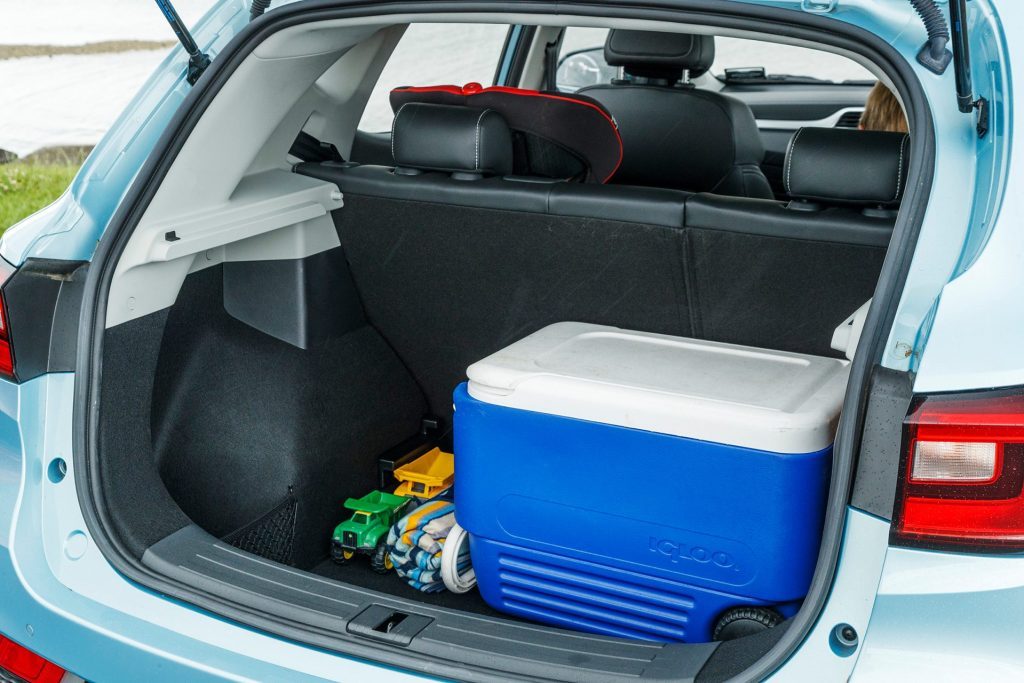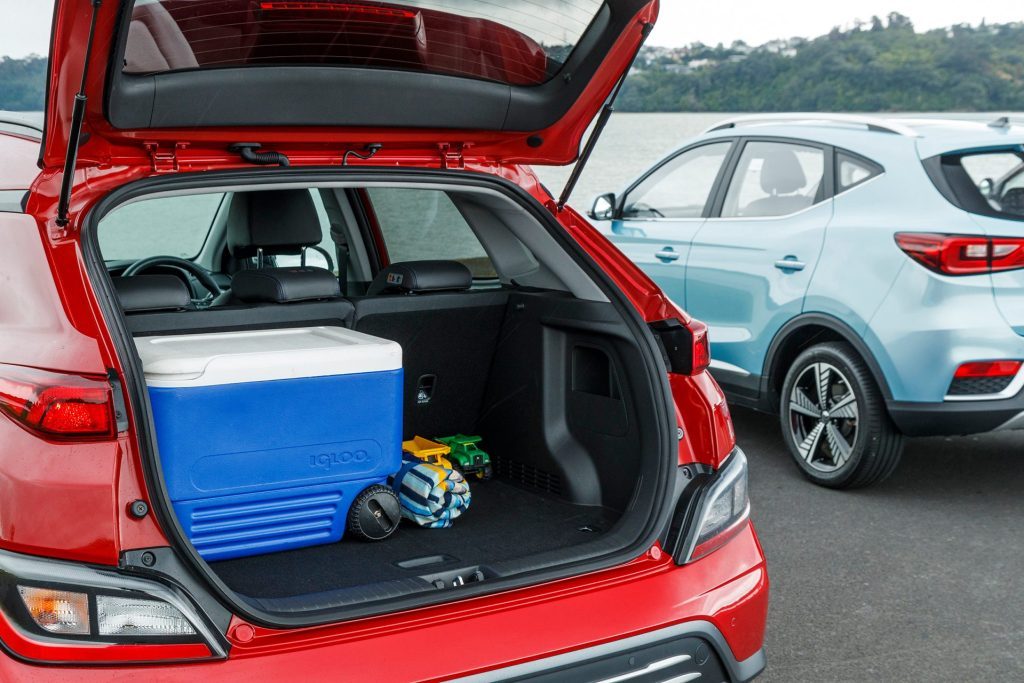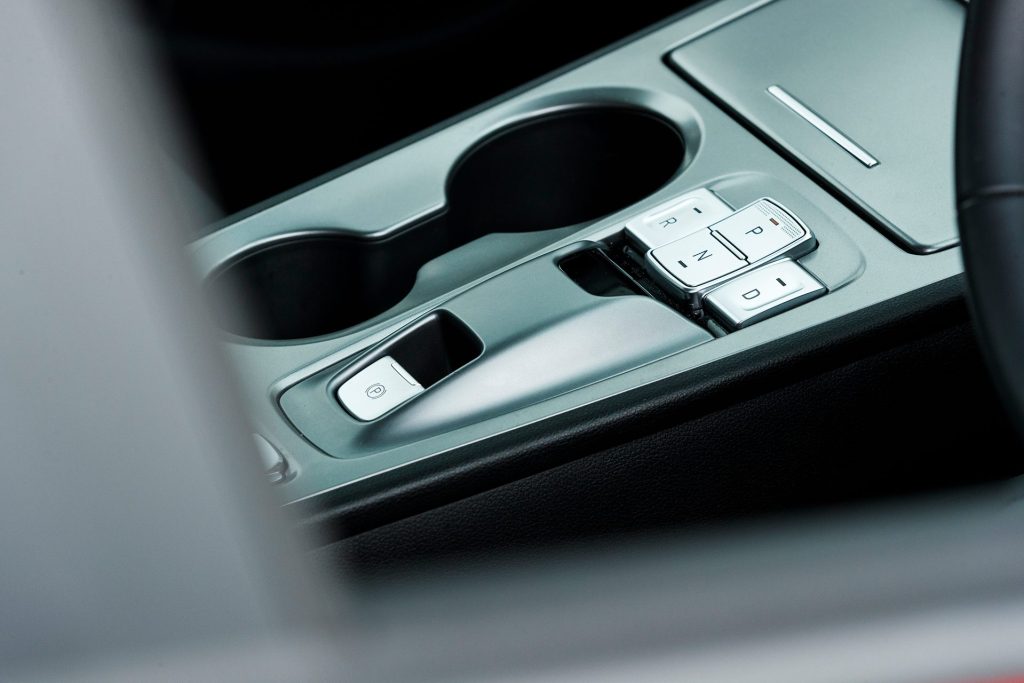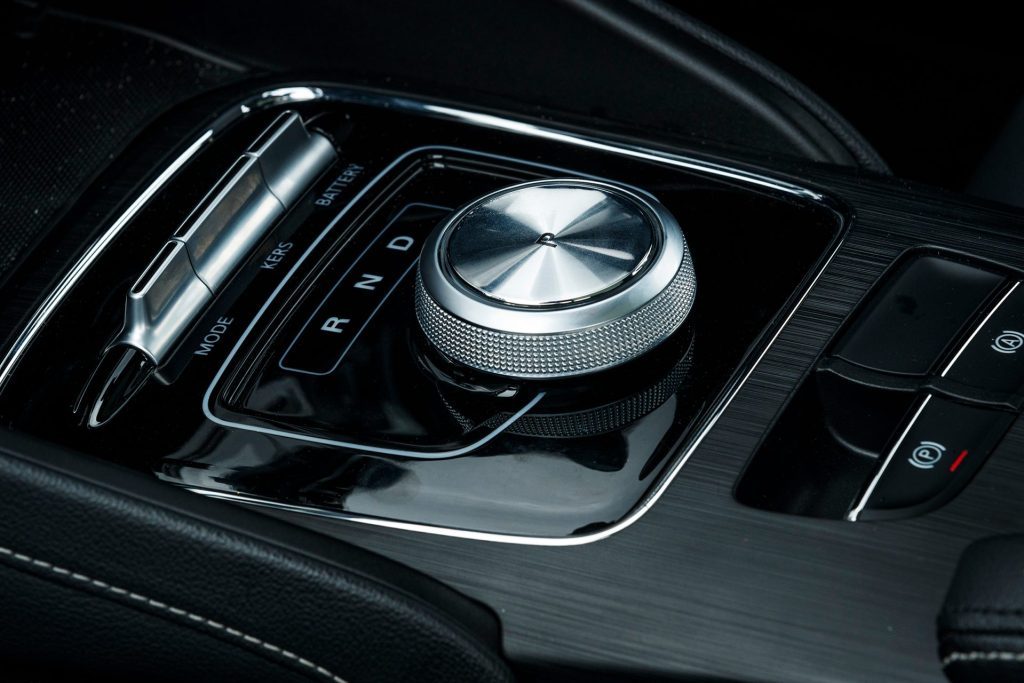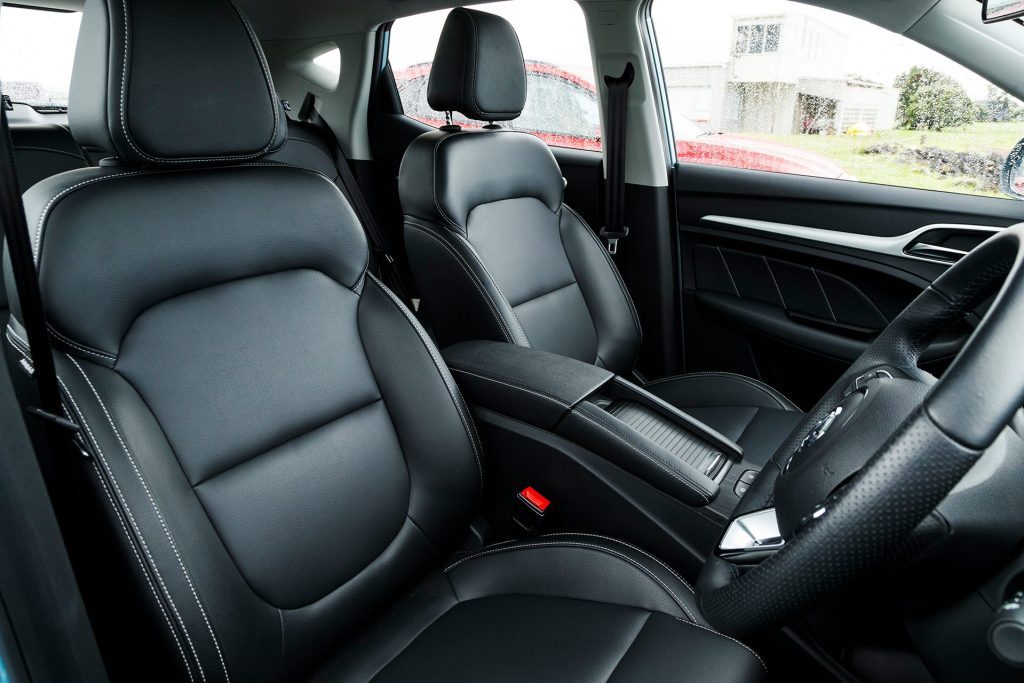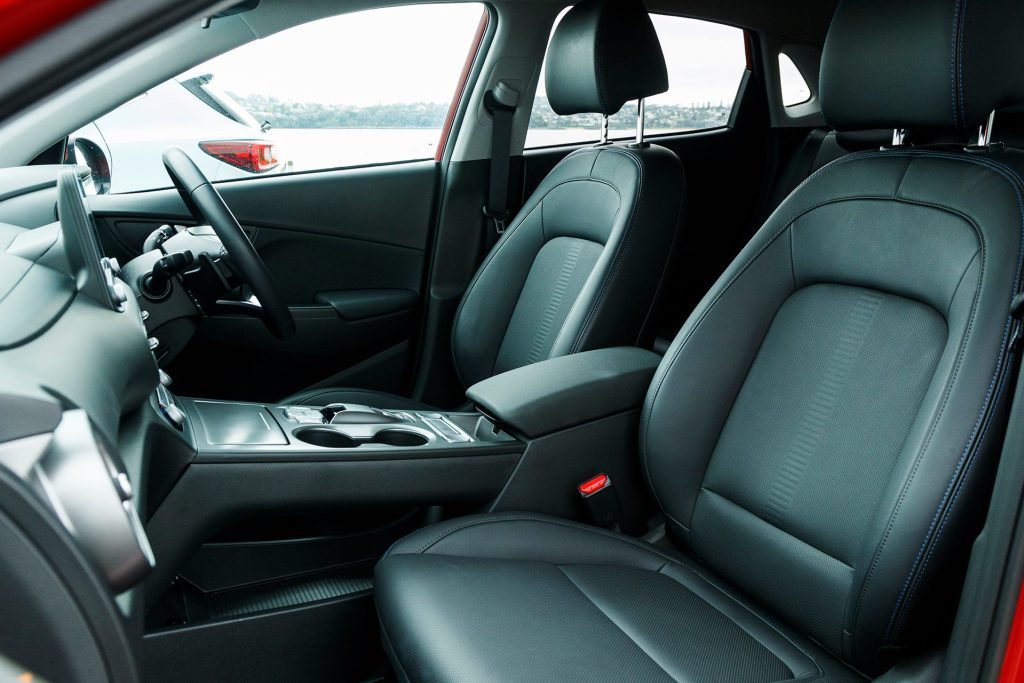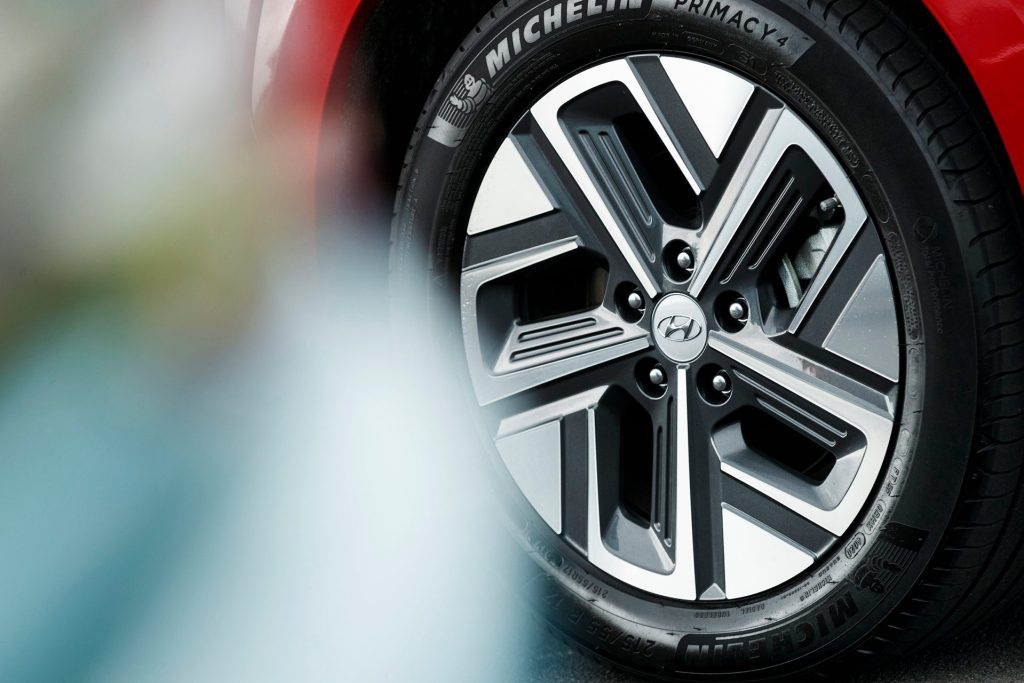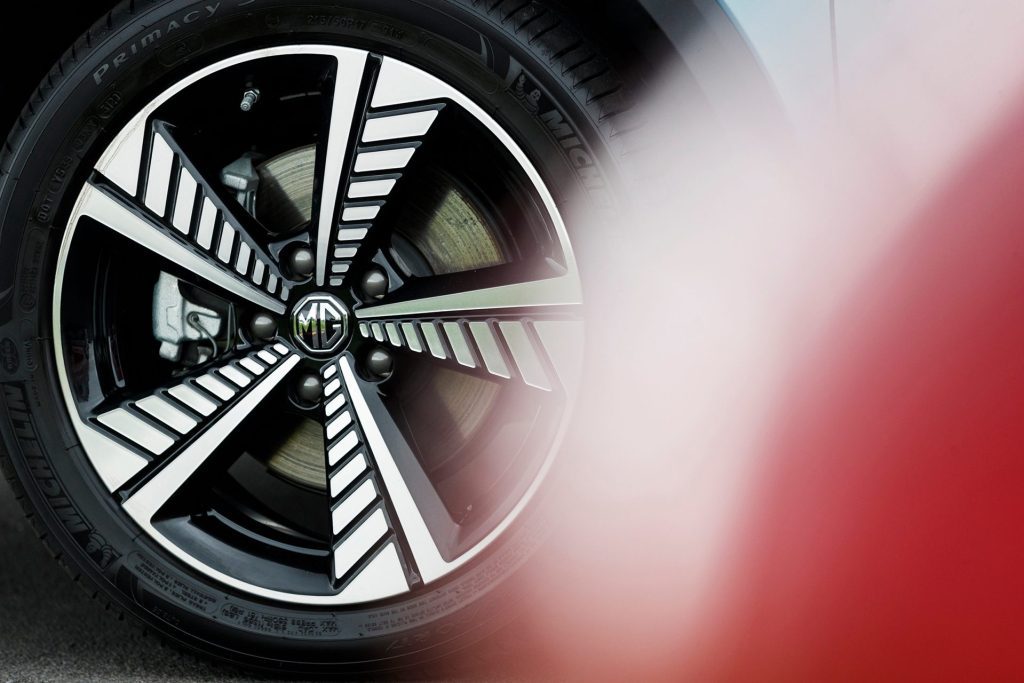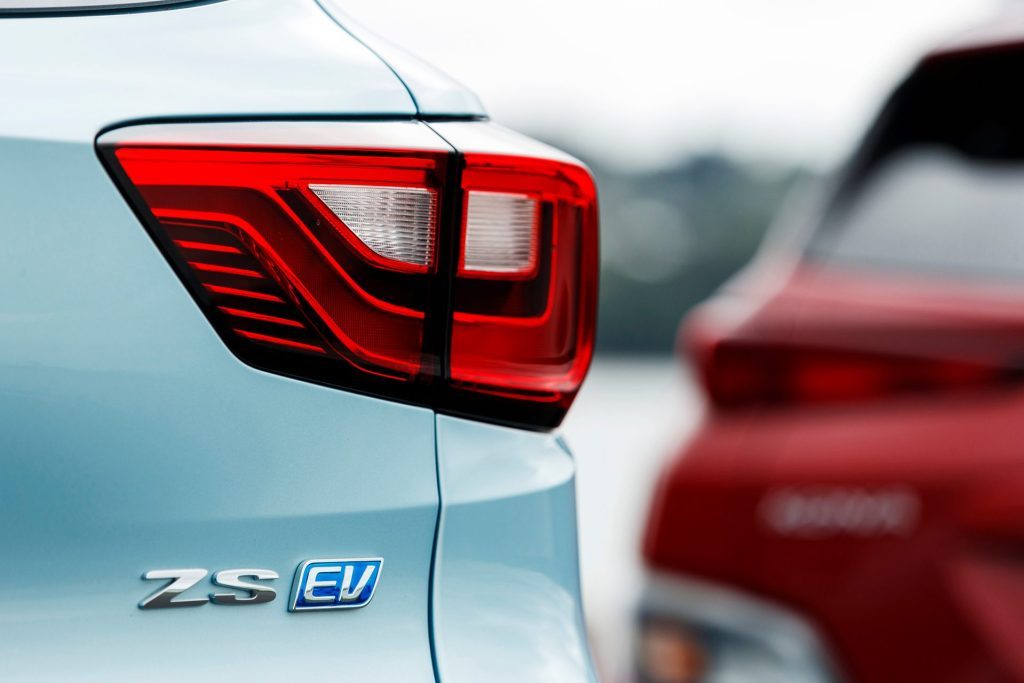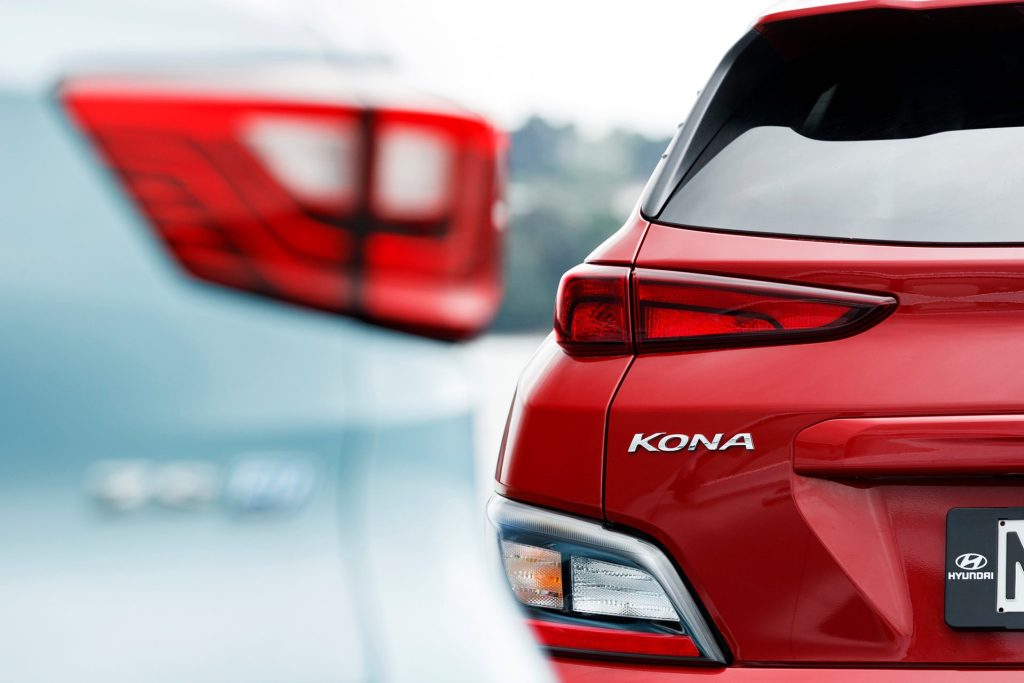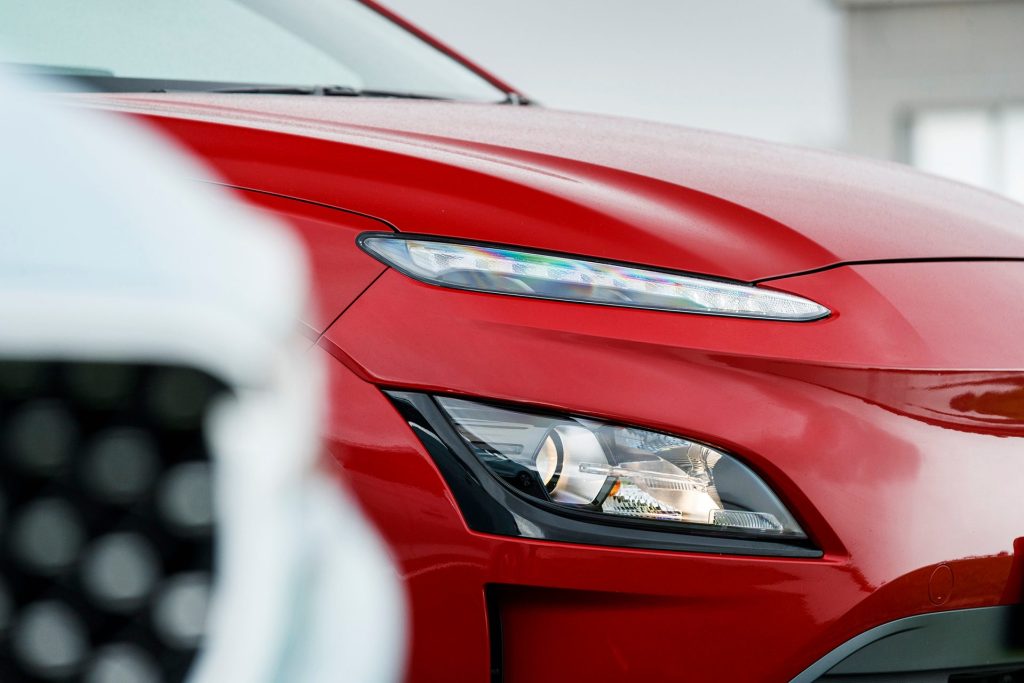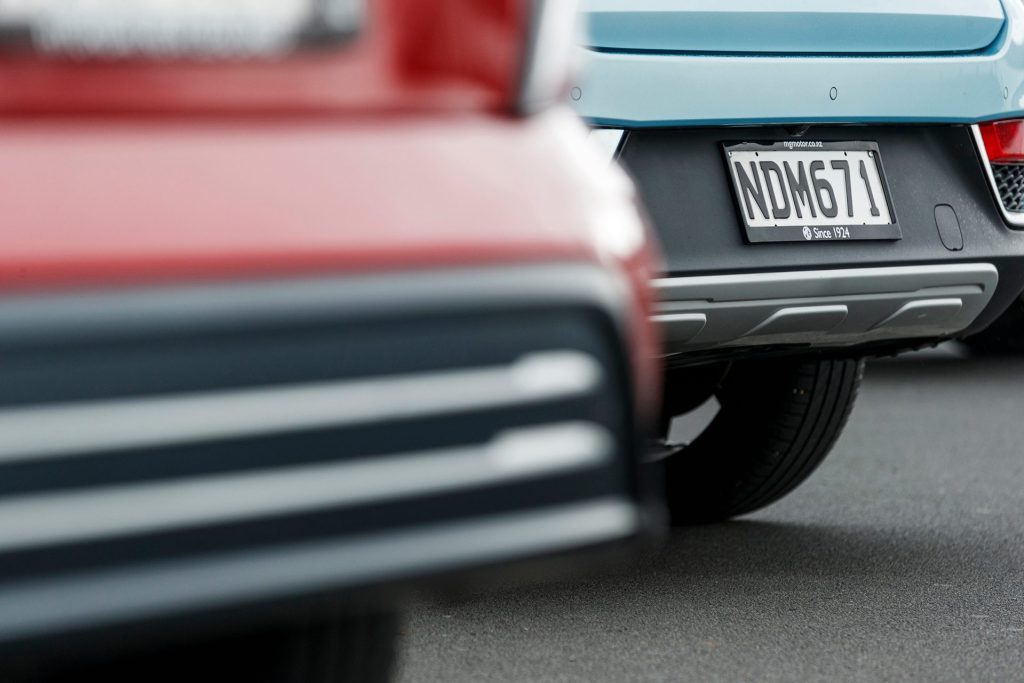2020 MG ZS EV vs Hyundai Kona 64kWh comparison
Two of the most popular EVs here are compact SUVs. But one is twice as much as the other. Is it really worth the premium?
While some still chant the petrol power forever mantra, there is a growing interest in electrics. However, battery power still has a long way to go to dent the market dominance of fossil fuel burners. Of the sales in 2021, just over 49 per cent were petrol-powered, diesel accounted for around 38 per cent, hybrids made up eight per cent and battery electrics just three and a half per cent. Plug-in hybrids accounted for a little over one per cent, if you’re doing the math.
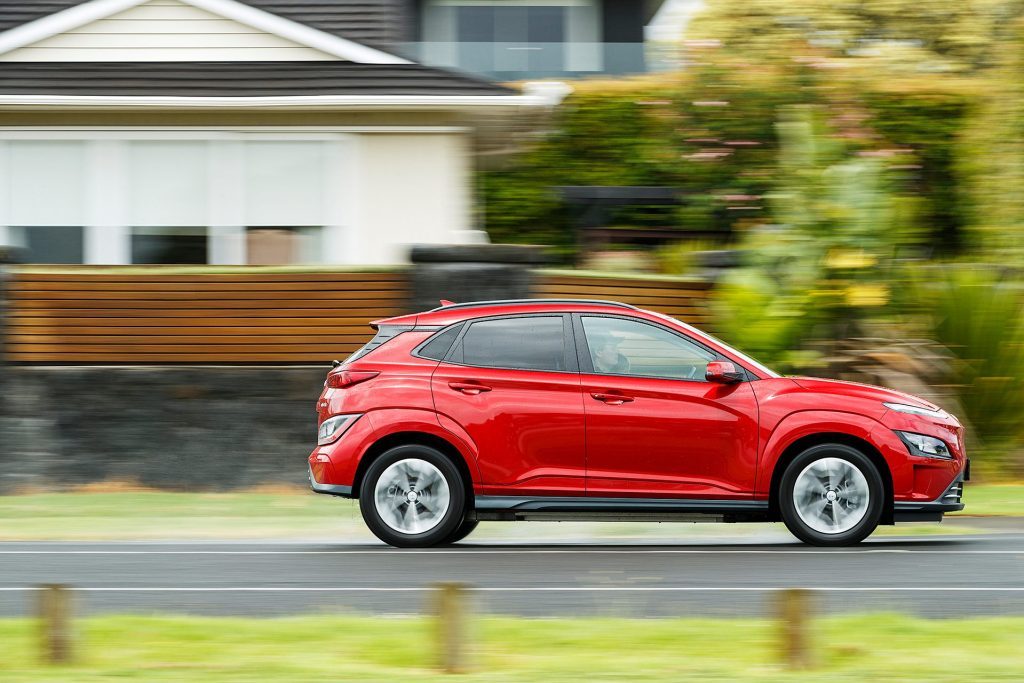
However, electric sales are trending thanks to government incentives. These have been required to encourage the uptake of EVs around the world. Yes, battery technology is expensive. And yes, we know EVs aren’t the answer for everyone, so please stop sending the hate mail, get out there and protest with the others.
Tesla’s Model 3 has been the big electric winner this year, and it is the only sedan/car that anyone wants to buy. Battling it out for the podium spots is a pair of compact SUVs, one from South Korea, the other from China, wearing a badge steeped in British tradition.
Hyundai’s Kona continues to sell well, and has been recently revised. Series II wears a new front fascia (that makes it look a little like a Tesla Model Y) with fresh lights and DRLs. There are painted arches and a new rear end. They have added more active safety features, and inside there’s a 10-inch digital cluster. Hyundai NZ also took the chance to introduce a $69,990, 39kWh version however, it’s the long ranger on test here, the $79,990 64kWh variant, which just qualifies for the $8625 discount, providing they shout the on road costs.
Do you really need to spend this much? MG reckons not, for its ZS is $30k cheaper at $49,990, including all on roads. The real question then – is the Hyundai really worth its premium?
Facts and figures
Both are front drivers, with a motor under the bonnet and a battery slung underneath the floor. Hyundai’s 64kWh Kona has 150kW with 395Nm of torque. Efficiency they rate at 14.7kWh/100km for a WLTP-rated range of 484km. The same figures for the MG read 44kWh, 105kW, 353Nm, 18.6kWh/100km and 263km. As to refueling, the Hyundai has a better onboard charger allowing for faster fill rates. For example, a 100kW DC charger will take the battery from 10 to 80 per cent in a claimed 47 minutes, while the same procedure on a 50kW charger takes 65mins. Home charging from flat to full with a 7kW wall box takes a stated 9h 15min. The MG can only handle up to 50kW of DC, taking 45mins to 80 per cent, while the home 7kW wall box requires seven hours. Both come with a three-pin portable device, described as emergency chargers, the MG taking 33 hours to cook, the Hyundai 28h. There’s no means to set the charge time in the MG, so that’s another reason why you’ll need to buy yourself a wallbox, which the rebate more than pays for.
How do they go?
The Kona is the better EV, without doubt. It has more oomph to start with, and the power delivery is smoother. Both have a trio of drive modes; Eco, Normal and Sport. When driven in Eco, the ZS feels limp, but the setting is entirely adequate in the Hyundai if you really want to maximise your range. Normal is preferable in each, while Sport feels a little overdone, testing the traction control, which is better sorted in the Hyundai, being quicker to bring any spinning wheels under control. You can squeal the rubber of the MG rather easily and there is more torque steer.
Hyundai has a better regenerative braking strategy. We left it in the Auto mode where it uses the radar and camera to adapt to the traffic flow and the terrain travelled, adding or reducing the regen to suit. You can also play with the paddles to adjust the regen easily, including nullifying it altogether. And the Kona’s pedal action is well tuned for effective braking.
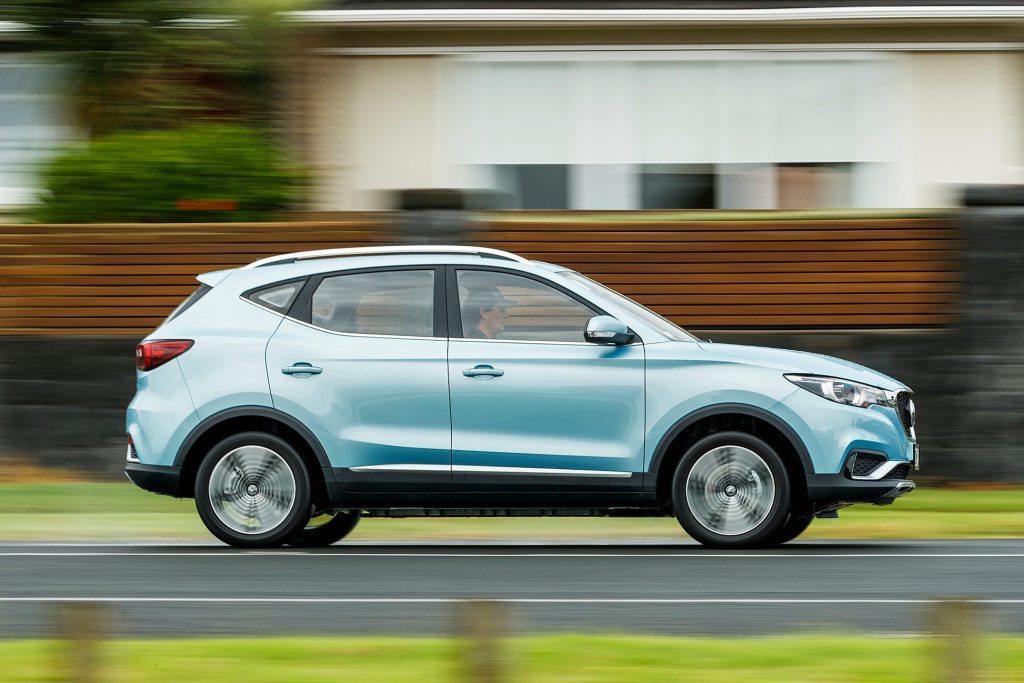
There are three stages of regen in the MG; light, moderate and heavy but it’s not easy to change between them on the go with the button mounted on the console. Smooth braking is hard to master, the pedal being squishy, and the transition from regen to the mechanical brakes happens quite suddenly. The ride is slightly firmer in the Kona but it’s more composed over the bumps. The MG is softly sprung but the dampers are too relaxed; when you hit a bump they don’t control the impact as well.
Telling is the Hyundai’s efficiency, key to its long range. Both have trip computers for keeping tabs on energy usage, monitoring the long term average but also able to track short journeys. The Kona averaged in the 12s, while we noted some urban trips, the ones where you’re mindful to maximise your regen, registered as low as 6kWh/100km. The MG’s average was in the 16kWh/100km range, and the best we saw on some trips was 12 while the worst was 20.
When cruising country type roads, Eco mode suits the Kona, and in full regen setting, it makes for relaxed, easy one-pedal driving. The MG is best left in the default Normal setting as the Sport mode is all a bit much, rather like in the Kona. It’s a bit of a laugh, the sudden surge of torque off the corner troubling the ESP but it also gobbles up battery reserves, especially in the MG. Through the bends, the Kona is more composed both in terms of roll and bump control, and it shows less interest in understeer.
Where’s the value?
It’s in the MG for sure. It matches most of what the Kona offers, and more. Both have an eight-inch touchscreen with Car Play and Android Auto, but the MG adds sat nav. The Hyundai has leather trim to the faux cow in the MG, but the ZS adds a powered driver’s seat, front seat heaters and a glass roof. Both have a smart key and the full range of driver/safety aids. The Hyundai’s systems are better tuned however with less intrusive lane keeping and superior active cruise. The MG’s system can leave its braking late, even on the most attentive setting, and it’s not the smoothest operator.
The Hyundai features a heat pump system, which warms the cabin by scavenging waste heat from the various systems.
By contrast, the MG uses a heater that zaps more battery power. So the Hyundai will be more efficient in cold weather.
Both interiors exhibit a fair amount of hard plastic, though the MG manages to include a few nicer touch points, like a knee pad on the centre console that’s missing in the Kona.
The Hyundai is rather small with limited rear leg room and less space up front, the driver hemmed in by the large centre console.
The ZS is a much more practical size, being just that wee bit bigger, without being too large.
There’s more rear legroom, easier entry and a much larger boot space.
Neither has a real spare if that matters, and neither is rated to tow. MG also has its new seven year, unlimited kay warranty too.
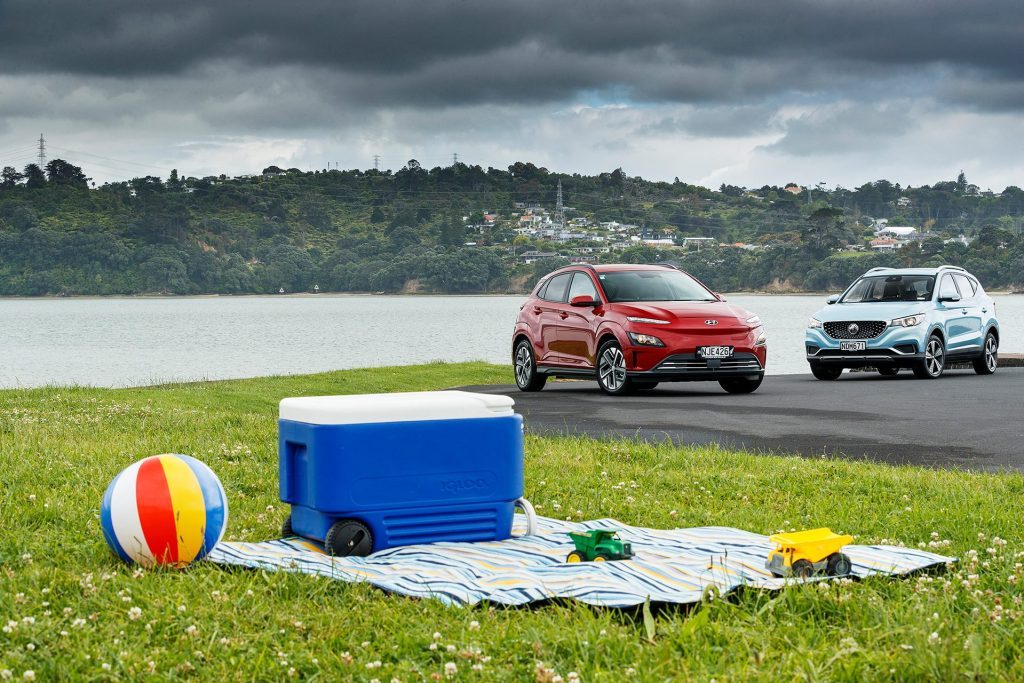
Verdict?
While the MG has its dynamic shortcomings, for those wanting a practical SUV with a few trimmings, you don’t have to pay big money to access emissions-free motoring with the MG.
The Kona is a thoroughly decent EV, with a massive range, but it’s small and pricey.
| Model | MG ZS EV |
| Price | $48,990 |
| Motor | single, 105kW/353Nm |
| Battery | 44.5kWh net |
| Range | 263 (WLTP) |
| Drivetrain | single-speed, FWD |
| Energy Use | 18.6kWh/100km |
| C02 Output | 0g/km |
| 0-100km/h | 8.21sec |
| Weight | 1532kg (claimed) |
| Model | Hyundai Kona 64kWh |
| Price | $79,990 |
| Motor | single, 150kW/395Nm |
| Battery | 64kWh (net) |
| Range | 484 (WLTP) |
| Drivetrain | single-speed, FWD |
| Energy Use | 14.7kWh/100km |
| C02 Output | 0g/km |
| 0-100km/h | 7.51ec |
| Weight | 1685kg (claimed) |


